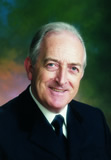Obra : "Cant al Meu Poble"
I.- L'il.lusió
II.- L'esforç
III.- L'alegria
IV.- Plenitud
(Obra de encargo)
Born in Montroy in Valencia, he studied at the
Conservatorio Superior de Música de Valencia under Manuel Palau, Miguel Asins
Arbos, Lucas Conejeros and José Roca (piano). He continued his studies in Madrid under V. Echevarria, R.
Dorado and Arias Macein. He has also studied orchestral directing with Walker
Vangemein and García Asensio. In open competition, he won a place as a member
of the Spanish national union of civil band directors.
He
has composed a wide range of pieces and won prizes in many important
competitions, including: the ‘Ciudad de Monzón’ composition prize (Huesca) in
1972; the ‘Santa Isabel’ prize of the Diputación de Zaragoza (1974); the
‘Maestro Villa’ prize of Madrid council in the years 1979 and 1982; first prize
for choral compositions for themes related to Extramadura in 1986 and 1988; the
Premio Constitución de Música of the regional government of Extremadura (1990);
the SGAE prize for symphonic bands (1992); and the individual medal of merit of
the C.l.T. of Caspe in Zaragoza.
His
unpublished works include several symphonic poems, ‘Don Quixote of the Mancha’,
‘Symphonic Poem for a Competition’, fantasias, sonatas for wind instruments and
orchestras, various orchestral themes (especially rural themes), ‘summer’
symphonic suites, and numerous compositions for various instruments in
different styles. Many of these works are registered in the municipal library
of Valencian composers.
He
has been invited to direct various prestigious groups and has been on the jury
in many composition and interpretation events.
His
works have been played in Germany, Mexico, Portugal, and the United States. He
is a founder of COSICOVA and various works have been recorded.
‘Canto
a mi Pueblo’ (Hometown Pride), has four movements: La Ilusión (The Dream), El
Esfuerzo (Labour), La Alegría (Happiness) and La Plenitud (Fullfillment).
The
work unites tradition and innovation and looks to the future without forgetting
the past. This complex score is composed of small cells that develop and mature
in the fourth movement by combining instrumental depth with scholastic
technique. The piece attempts to musically explore the generosity of a town and
its people.
|


